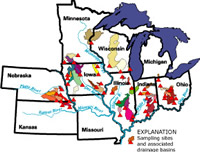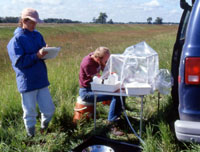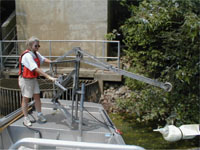A major thrust of the Toxic Substances Hydrology (Toxics) Program is to conduct large-scale reconnaissance studies of new contaminants. Reconnaissance studies take a first look at the occurrence and distribution of new contaminants in the environment. New contaminants are chemical substances that have not been extensively studied in the environment before, compounds where analytical methods for measuring relevant concentrations in the environment have just been developed, or newly manufactured compounds that are being introduced into the environment. The scale of these studies varies from multi-state areas to large watersheds, such as the Mississippi River, to the entire Nation. The Toxics Program has conducted reconnaissance studies of the occurrence and distribution of contaminants in rivers and streams, surface-water reservoirs, ground water, and precipitation. The information from these studies is used by water resource managers and environmental regulators to develop sound policies regarding the occurrence and distribution of new contaminants. The information presented on this page cuts across lines drawn by individual investigations and projects so that information from reconnaissance studies can be presented in one place.
Investigations and Research Activities
Fact Sheets
|

The USGS sampled 52 sites on Midwestern streams during post-application runoff in 1989, 1990, 1994, 1995, and 1998 as part of a reconnaissance of herbicide concentrations in streams.
(Click on Image for a Larger Version)
Bibliography
Headlines

Experienced personnel use proven methods that enable representative environmental samples to be collected from a well in the well network for the National Ground-Water Reconnaissance for Emerging Contaminants in the Environment Investigation

As part of the USGS’s national reconnaissance of the occurrence of emerging contaminants in source waters, scientists collected water samples near intake structures for water-supply plants. Here a USGS technician on a water-quality sampling boat is operating a crane with a water-quality sampler attached -- Duck River, TN
|